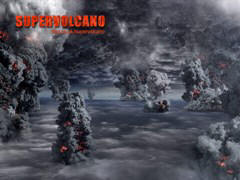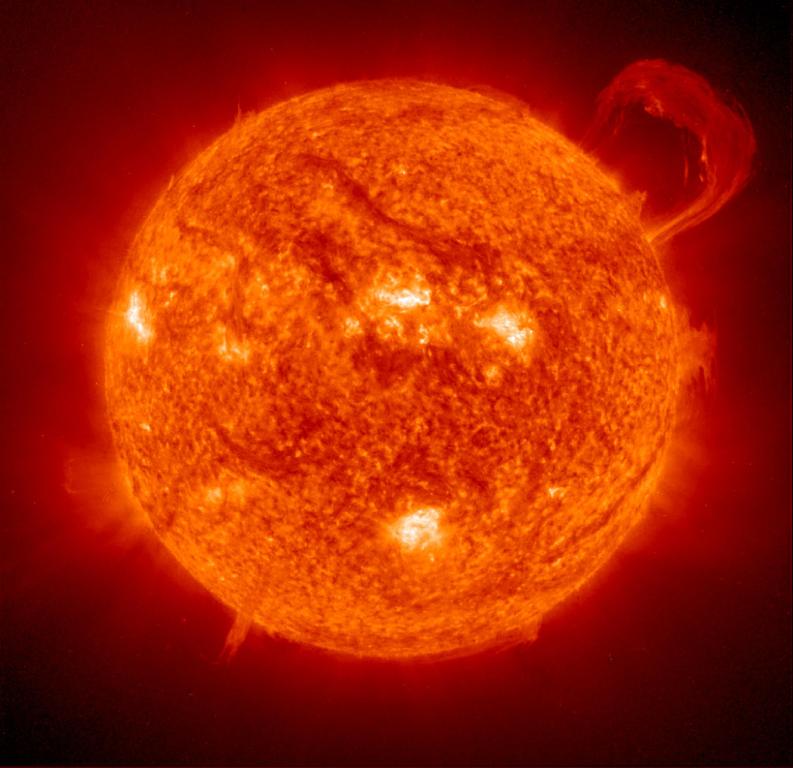
450, Life
Some days later, Klype had his scenarios ready for presentation. Lucie was eager to see, but Klype hesitated. He wanted to do some explanations first. Once again he stressed that the information at the crystals do not entirely fit what they observe. The planets order and nature deviates strongly for at least two of them. The crystals indicate that a planet is missing. Furthermore, a moon seems to have taken the inner orbit. We have to deal with that later, Lucie said. I am rather comfort that when the pieces comes in place one by one, the greater picture will appear and the mysteries disappear. Show me what you have got so far. Klype started to visualize the scenarios.
The Oort planet reached the Terrestrial planetsí orbits. The star pulled so hard at the Oort objects that most of them deviated from the planet's path. The Terrestrial planets had to be hit by rocks and ice. If they were not hit on the way in towards the star, they were hit on the way out.
 Once
again, the second Terrestrial planet was rammed by comets of minerals
that had explosive impacts. One Oort rock in particular hit the planet
between the continental plates. It caused the crack to grow dramatically
and open up all the way down to the magna reservoir. Supervolcanos
erupted and spewed magna for decades, that devastated the planet. They
blasted so much ash and toxic gases into the stratosphere that it
blocked out the sun, causing the temperature to drop. Soon a major and
long lasting ice-age began. This had a catastrophic effect on life,
reducing it to a minimum. Life was pushed to the edge of extinction.
Once
again, the second Terrestrial planet was rammed by comets of minerals
that had explosive impacts. One Oort rock in particular hit the planet
between the continental plates. It caused the crack to grow dramatically
and open up all the way down to the magna reservoir. Supervolcanos
erupted and spewed magna for decades, that devastated the planet. They
blasted so much ash and toxic gases into the stratosphere that it
blocked out the sun, causing the temperature to drop. Soon a major and
long lasting ice-age began. This had a catastrophic effect on life,
reducing it to a minimum. Life was pushed to the edge of extinction.
When the moon from the eighit's planet passed the inner planets, the star won the gravity rivalry. However, the moonís own speed made a centripetal contra-force. Finally, they found a stabile orbit for the moon around the star. When the Oort planet sailed passed the star, the moon got its inner orbit. While the Oort planet sailed back towards the Kuiper belt, the moon became a permanent member of the star system, now known as Mercury.
The Oort planetís party of ice and rocks was pulled by the 300,000 times as massive star. They showered like black and white comets towards the terrestrial planets. Much of the ice stemmed from the original iceberg that started the oval path. Therefore, the ice contained a lot of the original genetic stuff that the other icebergs brought in the first round. Even though the planets made a destructive bombardment, the planets gained more by the new genetic material.
The extra genetic materials that hit the first terrestrial planet did not help much. The hot environment boiled most of the organisms before they reached the surface. Remarkable enough, despite the harsh conditions, life went on.
 100
million years later, something quite extraordinary happened at the sun.
Maybe because of an Oort object's collision, the star erupted. A large
arm of glowing masses was thrown in the planetís direction. Even though
the planet was not directly consumed by the masses, the star storm that
followed was disastrous.
100
million years later, something quite extraordinary happened at the sun.
Maybe because of an Oort object's collision, the star erupted. A large
arm of glowing masses was thrown in the planetís direction. Even though
the planet was not directly consumed by the masses, the star storm that
followed was disastrous.
The planet was left like a pot with boiling minerals, gasses and liquid. The planet got a thick global cloud with the temperature of several hundred degrees.
At the second terrestrial planet, the bombardment was hard this time. The impacts caused earthquakes, floods and volcanoes of global magnitude. The continental plate got even more impacts that caused deep craters. However, the extra genetic matter was just as rich as the first time.
A global cloud kept the sun out and the planet was cooled down. A new ice-age, where half the planet was covered, lasted millions of years. The life in the seas moved to the warmer regions, but most species froze to death.
At long last, the cloud dissolved, the star broke through and the ice melted back to the poles. Finally only the North Pole and South Pole were covered by ice. The melted ice and the rain made large lakes of fresh water. Several species found their way from the seas, via the rivers to the fresh water lakes. They formed new cultures.
The conditions for the surviving species were extraordinary good. Most sea creatures developed to advanced species. In the seas, new species appeared, like sharks, crawfish, turtles, corals and numerous kinds of seaweed. At land, new species like scorpions, lizards and flying insects came to life.
Plants moved to land to feed on the rich soil, photosynthesis and air. Later the plants made oxygen in the air that is necessary for animals to survive. Sea animals followed the plants to land, so the third kind of animal developed. Consequently the planet supported life that could live in the sea, at land and in fresh water.
Life at the third planet was still very much in the desert milieu, despite the additional support of water. The distance to the star and its cold core, provided seldom positive temperatures. When the star warmed the planet, the thin atmosphere did not protect the surface from the radiation much. Life in the desert environment was hard.
The insects became the dominant specie. They were able to survive frost and radiation. Their shields provided an advantage in protection that almost became a condition for survival.
The low gravity made flying easy. Flying insects got good conditions for further development. Flying was an advantage in attack, escape and movement to warm and richer areas. Soon the flying insects dominated.
There were also primitive species of plants, fishes and snails. However, they were pushed down the food-chain. The waters became their protection. They did not develop much at land.
The fourth planet did not sufferer by hard impacts. A reason was that the atmosphere vaporized ice and rocks before they reached the surface. Furthermore, the sea took off for the impacts. Surely there were floods that whipped livings of the islands, but they were not distinct. The waves did not disturb the aqua life much. All in all, the impacts contributed with material and genetic matter, and shook it all together well.
The aqua life had almost ideal conditions. Species developed faster and more than on any other planet. Their cultures were not slowed down by the struggle for life. They got rich food and a rather peaceful life. The adaptation to the aquaculture was not that complicated for the mammals, since they were born in water. The lungs developed to be extra strong, so they could extract oxygen out of water. Their life started in theirs motherís womb in aqua environment. Swimming at birth was natural.
Fishes and mammals developed in very different phases. The mammals developed their intelligent much faster than any other sea animals. There were predators in the sea though, that were a constant threat to the others. Some species became regular food for the predators, while other found their ways to avoid such a fate.
Lucie was thinking and Klype waited for her to speak. After a while, Klype became impatient and asked, what do you think? Lucie said, I think the scenarios certainly can be used. They might have some, well letís call it more uncertain chapters, but it certainly draws an acceptable picture of the events. But letís say these scenarios are probable, there are still some major mysteries left. The scenarios keep showing there are four terrestrial planets, while we know the first is a misplaced moon. There is life on only one terrestrial planet that we know for sure. However, the scenarios still insists that there were three or four living terrestrial planets. If so, what happened to the others? And finally, this oceanic planet, there is no evidence of its existence, is it?
Klype waited for this question. He knew he now was respected and wanted, and certainly liked to keep it that way. Your little ďhelpersĒ certainly advance the work, he said with a hint. Lucie placed a little box in front of him and Klype took one as any snack. This is, as you say, great mysteries. However I am most certain that there are quite simple explanations. All I need is time, information and unlimited supplies of these. He held up the box and Lucie knew he was bargaining. Frankly she would not care if he took it all, as long as she was getting her scenarios. On the other hand, she had experienced his lack of judgment. It was, in the first place though, the reason why she got a grip on him and got him here on the job.
Despite the perfectly designed body of Lucie, Klype could see that she was skeptical in her body-language. Come on, he said. You provide the stuff and I provide the results, - simple as that. Lucie hesitated. Ok, she finally said. You get what you need and I will judge the results carefully. If you do a good job, the deal is on. What I want know is a more detailed scenario of life. Show me for instance how life really was at the little red desert planet. She went over to her own place, but turned around and added, I will be more critical at the 'life on Mars' scenario. Klype did not care much; he got what he wanted for the moment.